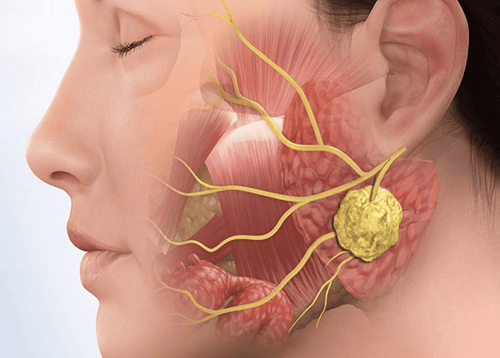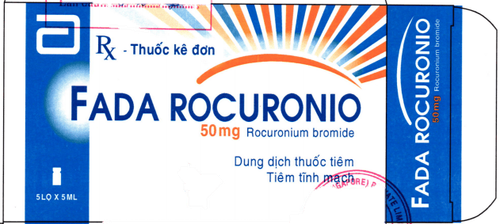This is an automatically translated article.
Cervical lymphadenectomy is a classic surgical treatment used in the treatment of head and neck cancers. So how is this method done, what are the contraindications and does the patient experience complications?
1. What is head and neck cancer?
Head - face - neck cancer is the general name for all types of cancer in the head - face and neck area, including:
Lips, tongue, floor of the mouth and gum area; The nasopharynx, lower pharynx; Laryngeal region; In the nasal cavity. Cancers that develop in different areas will have different symptoms and course of the disease. In general, the proportion of patients with head and neck cancer globally is on the rise.
2. Some common types of head and neck cancer
2.1 Throat cancer Throat cancer is often difficult to detect in its early stages because there are no typical symptoms. The symptoms are relatively general and easily confused with other diseases, including:
Nasopharyngeal cancer ; Oropharyngeal cancer; Cancer in the lower area of the pharynx.

2.2 Oropharyngeal cancer A type of head and neck cancer is quite common, especially for men.
2.3 Laryngeal Cancer The larynx is an area of cartilage, located just below the pharynx of the neck. There are a lot of vocal cords here. Laryngeal cancer not only endangers health but also greatly affects daily life, especially language and communication.
Trắc nghiệm: Thử hiểu biết của bạn về hạch bạch huyết
Hạch bạch huyết có vai trò quan trọng trong hệ miễn dịch của cơ thể. Bài trắc nghiệm dưới đây giúp bạn hiểu phần nào vai trò và chức năng của hạch bạch huyết.
Bài dịch từ: webmd.com
3. Learn about radical cervical lymphadenectomy – a treatment solution for head and neck cancer
Neck lymphadenectomy is an important technique for the cancer treatment cycle in general and the treatment of head and neck cancer in particular. Doctors said: cervical lymph node invasion is an important factor to predict the progression of carcinoma, especially epithelial areas in the oral cavity and respiratory tract, upper gastrointestinal tract.
In principle of treatment, cervical lymphadenectomy should be performed in the same lymph node region as the primary tumor. However, in cases where the primary lesion is difficult to define, cervical lymph node dissection must still be preferred over other treatments.
3.1 Indications for performing radical cervical lymphadenectomy Radial cervical lymphadenectomy is indicated in the following cases:
All pathologies of lymph node metastasis; In case of lymph node invasion and disruption of the lymph node capsule (usually from the invasion of the primary tumor); Cervical lymphadenopathy is abundant on one side of the neck, but the primary lesion is unknown. 3.2 Radical cervical lymphadenectomy is contraindicated in which cases? However, radical cervical lymph node dissection is not always performed. In some cases, doctors will not choose this method:
Nodules appear when the tumor is rapidly progressing: radiation or chemotherapy treatment is required first to slow the growth of the tumor , then assess the patient's surgical ability; Locally invasive lymph nodes (eg, posterior fixed N3 nodes): these are not surgically removed; Nodules appear on both sides; Patients with advanced age and poor health; Patients with severe kidney or heart failure who cannot afford major surgery. 3.3 Steps to perform radical cervical lymphadenectomy The patient will be placed in a supine position and tilted to the healthy side (no lymph nodes). Next, the doctor will insert a thin pillow in the shoulder of the neck on the side of the node to expose the entire neck area more clearly; Anesthesia by endotracheal anesthesia technique; An incision is made from the chin to below the thyroid cartilage and the carotid trough. The incision will usually go through the skin and subcutaneous tissue; Peel off the skin flap; Radical cervical lymphadenectomy.
4. Some common complications after radical cervical lymphadenectomy
4.1 Bleeding Usually caused by technique from the surgeon, not careful hemostasis. To treat, doctors have to operate again to stop the bleeding.

4.2 Lymphatic discharge This usually comes from a tear in the chest tube. The conductive fluid is cloudy like rice water. The treatment should be based on the amount of fluid flowing:
If the turbidity is less than 100ml/24h, continue to monitor. In the case of increasing fluid, surgery is required to find the tear site of the thoracic duct and suture. 4.3 Obstruction of drains Change the drainage to another, to prevent fluid accumulation in the neck area.
4.4 Shortness of breath This complication is very rare.
In general, radical cervical lymphadenectomy is widely applied in the treatment of most diseases of head and neck cancer. Until now, this method is still appreciated for its effectiveness in slowing down the progression of cancer. If the patient is indicated for surgery, it is necessary to follow the instructions of the doctor before surgery to ensure that the risks are limited.
To treat head and neck cancer with the most effective radical neck lymph node dissection, patients should choose reputable and quality medical centers. Vinmec International General Hospital gathers a team of famous doctors and nurses in the industry, with good expertise, rich experience, heart and vision. Not only domestic doctors, there are also foreign doctors from Japan, Singapore... helping patients access new and effective treatment regimens from countries with developed medical backgrounds. In the world.
In addition, the system of facilities here is very modern. The machines are all imported, new and high quality, effectively supporting the doctor's diagnosis and treatment process faster and more effectively. To register for examination and treatment at Vinmec International General Hospital, you can contact the nationwide Vinmec Health System Hotline, or register online HERE.
SEE ALSO:
What are the types of head and neck cancer? What is head and neck cancer? Learn about head and neck cancer













